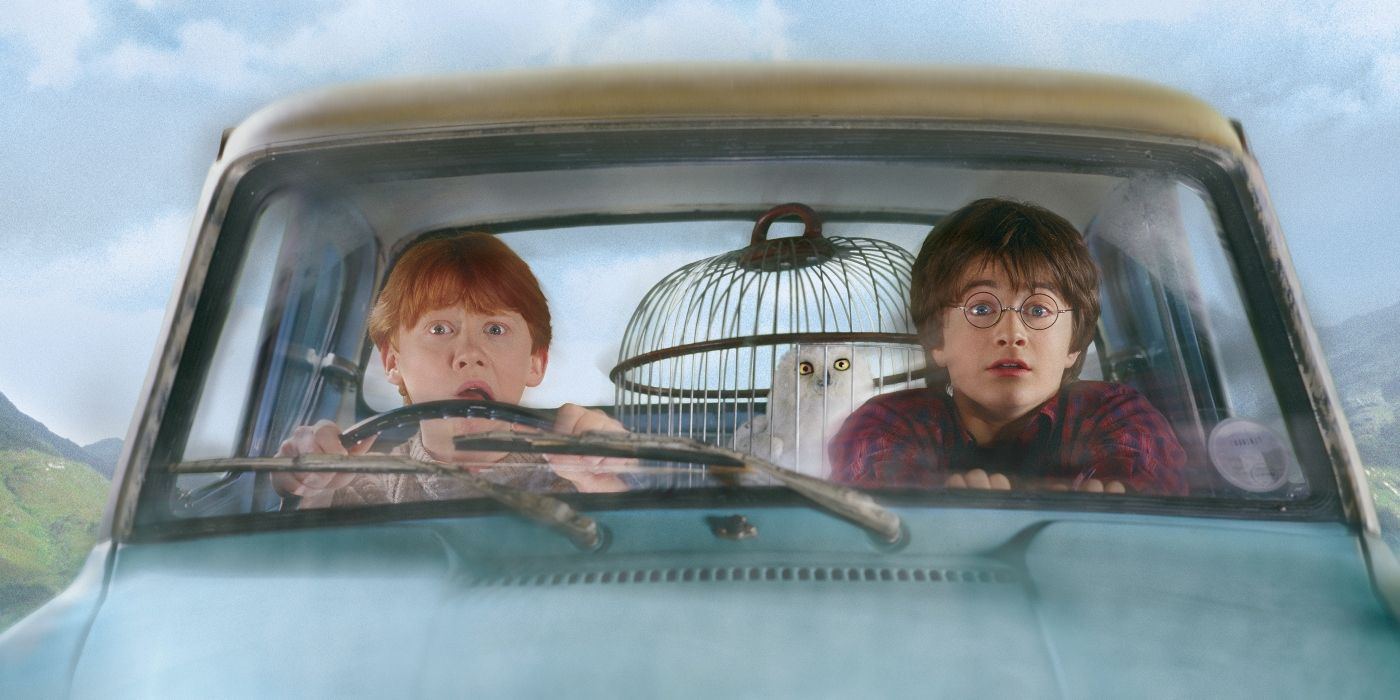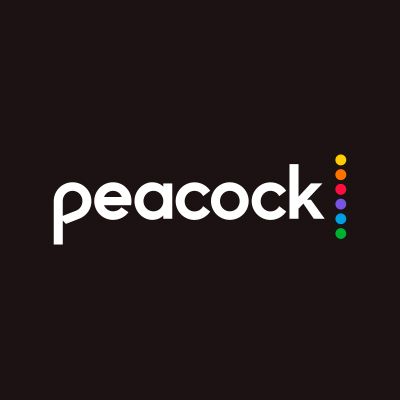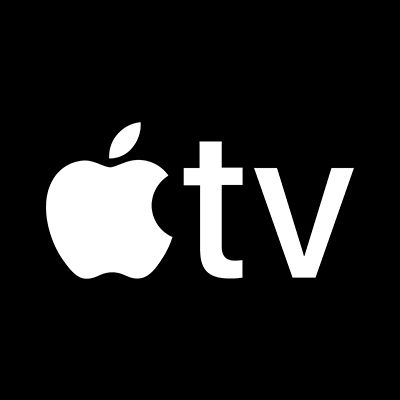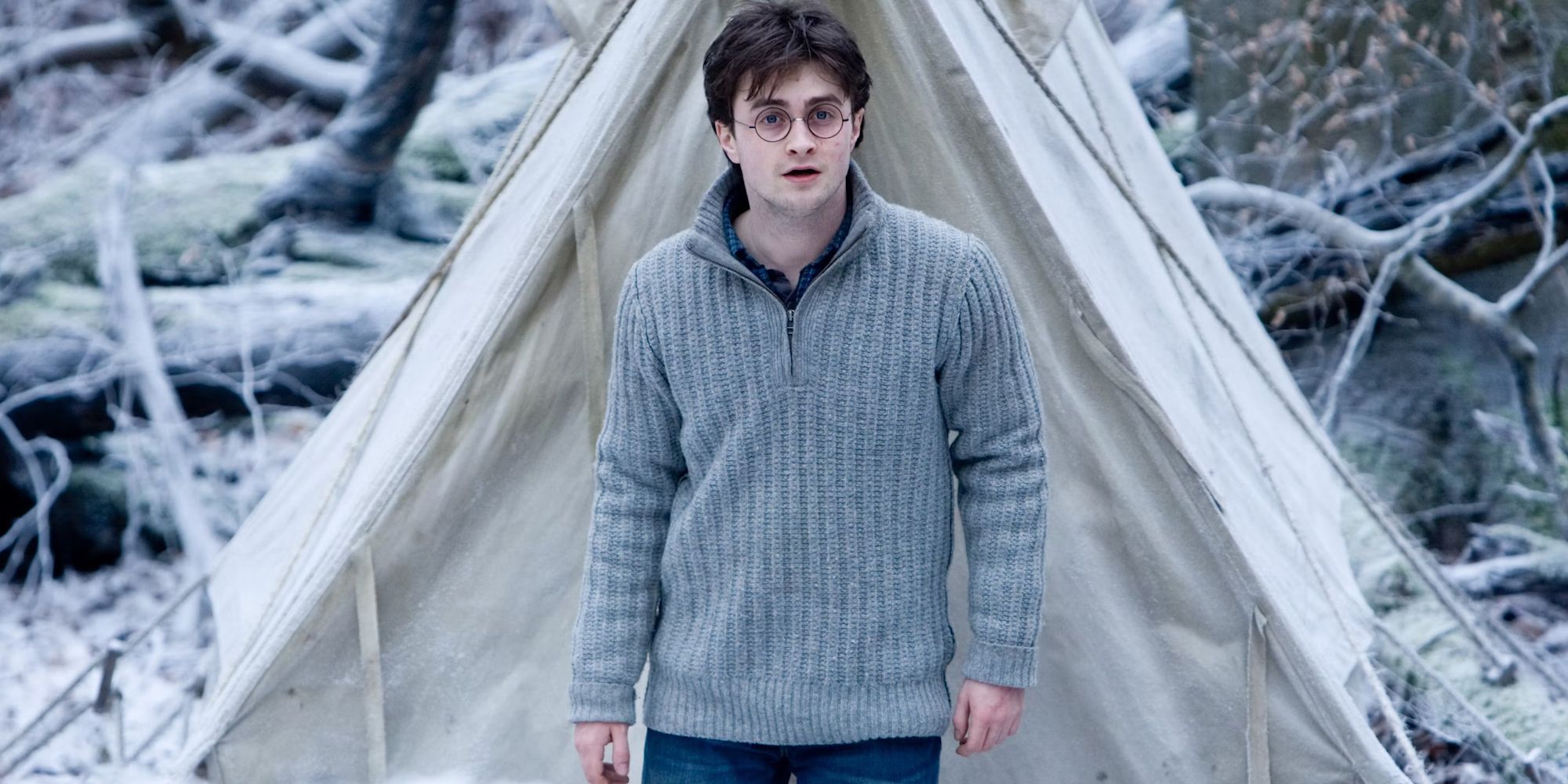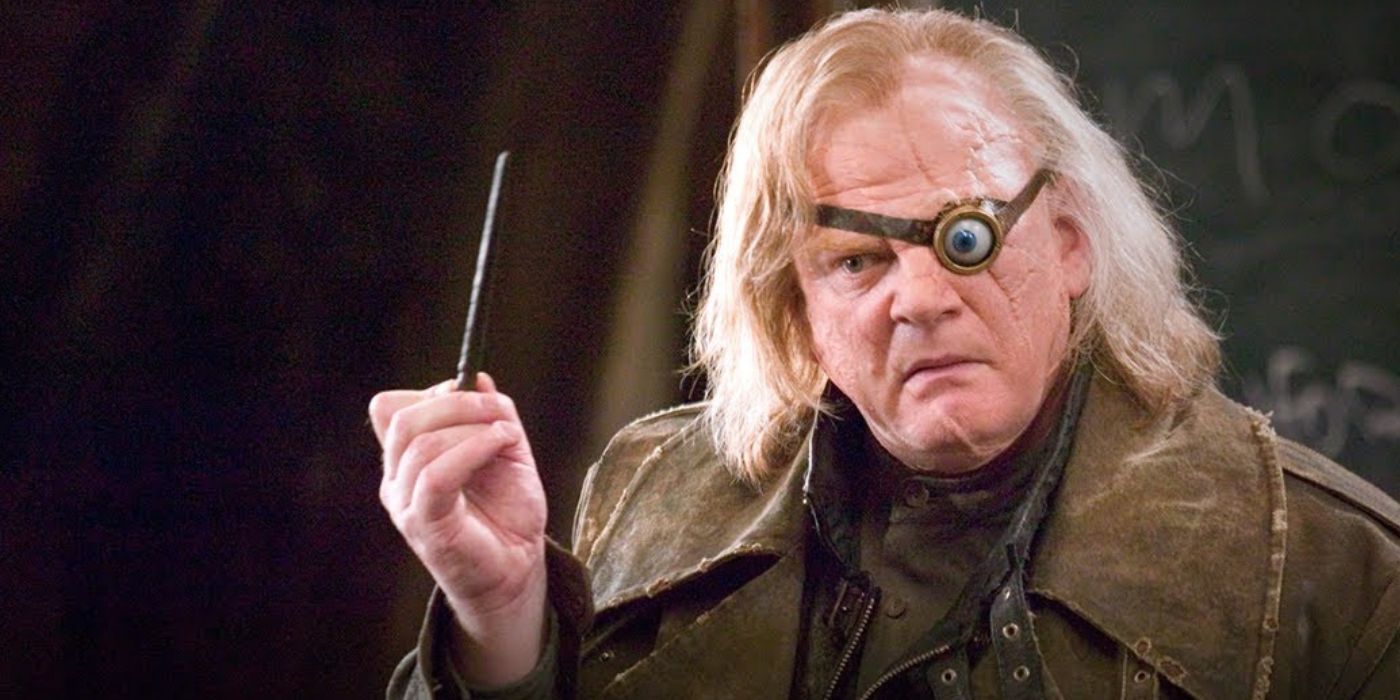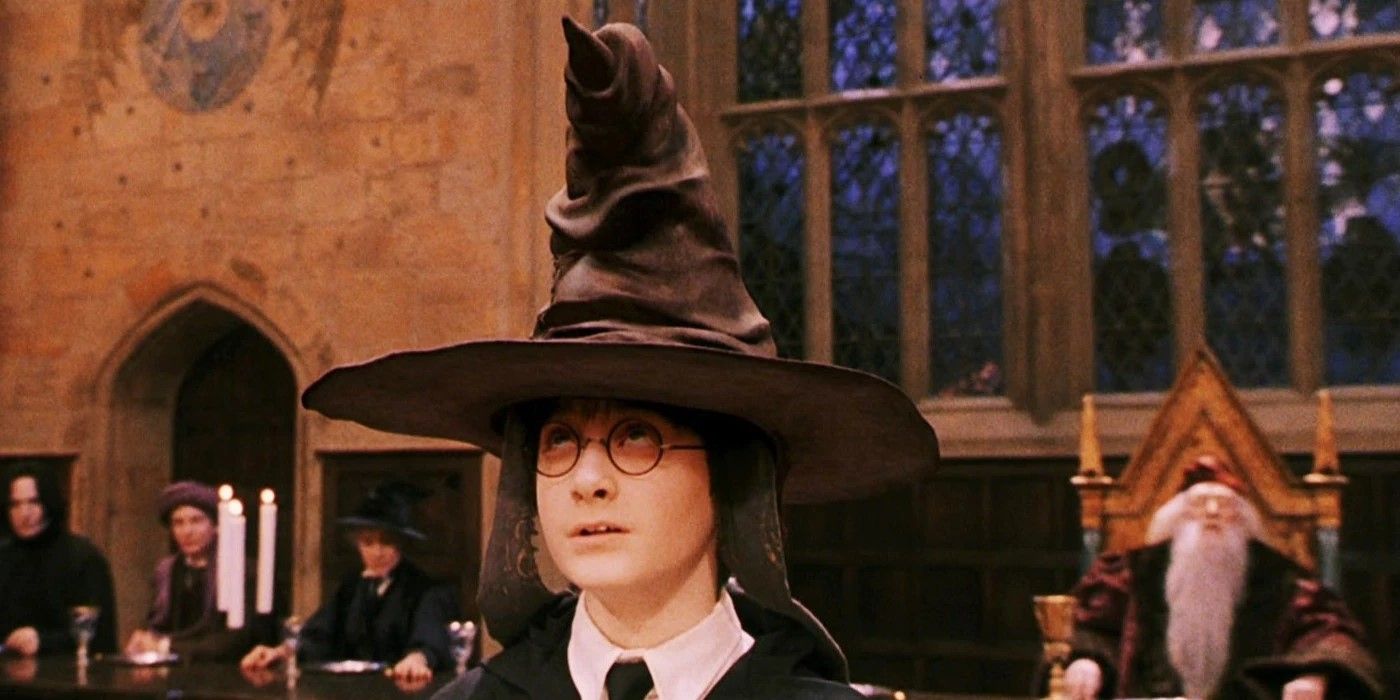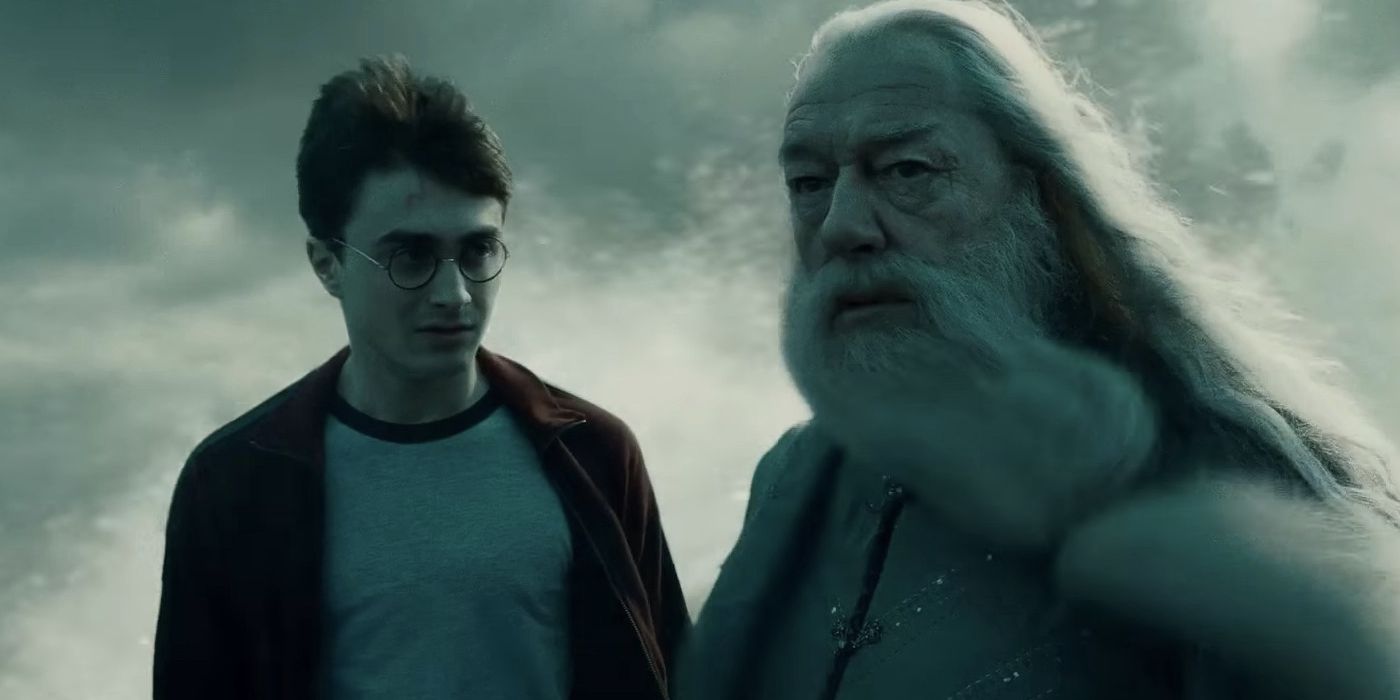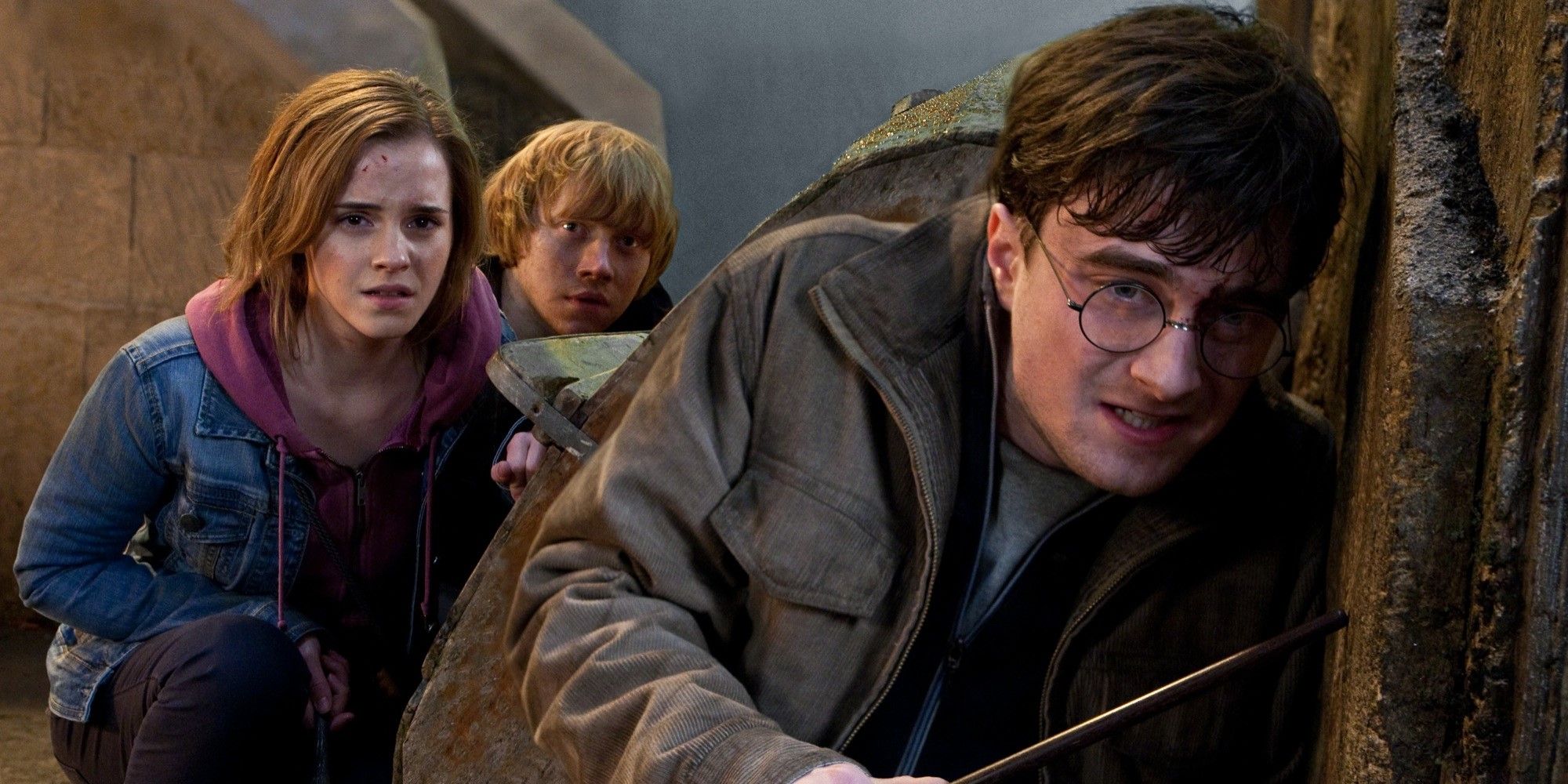The Big Picture
- The Harry Potter film franchise maintained quality across eight movies, with different directors adding flavor without sacrificing character or story.
- While there isn't really a bad film in the bunch, when ranking the films as movies rather than adapted stories, some of the stories stand out over the others.
- The Harry Potter movies visualized what book readers had long fantasized about in their heads.
The Harry Potter franchise is a global phenomenon like few others. It’s been 17 years since the last book was released, and 13 years since the last movie hit theaters, and yet the IP is as strong as it ever was. Harry Potter is ubiquitous in the form of elaborate theme parks, video games, and, of course, highly re-readable novels. Although author J.K. Rowling's anti-trans stance has affected her profits, it seems like the franchise is still beloved by those who can separate the artist from the art. But Harry Potter doesn’t begin and end with the books. As with anything that’s popular nowadays, Hollywood came calling rather quickly, and the first Harry Potter film was released a little over a year after the fourth book hit the shelves.
But in another minor miracle, the Harry Potter film franchise was able to maintain a level of quality rarely found in film series that stretch on past one or two movies, let alone eight. The Harry Potter movies visualized what book readers had long fantasized about in their heads. They were able to evolve and grow just as the novels did, with four different directors bringing a variety of flavors to the series from film to film without sacrificing character, story, or continuity. It’s a magnificent accomplishment made all the more impressive by the fact that there’s not an outright bad movie in the bunch. It's hard to go through the holiday season or skim through the channels on TV without stumbling upon one Harry Potter marathon or another.
A brief note before we begin, though: For the purposes of this feature, I’m evaluating each Harry Potter movie as a film first and foremost, not necessarily how it stacks up against its respective novel – what was left out, what was added, etc. With that said, let’s get started…
8 Harry Potter and the Chamber of Secrets (2002)
Directed by Chris Columbus
At 161 minutes, Chamber of Secrets is the longest film of the Harry Potter franchise, and perhaps not-so-coincidentally, it’s also the last film to try and fit (almost) everything from the book into the movie. Director Chris Columbus expands on the world he built so beautifully in the first film with a slightly darker and much more plot-heavy sequel, and while the film isn’t bad per se, it’s definitely the most laborious of the bunch.
Though it’s certainly too long and meanders in places, there’s still a lot to like about Chamber of Secrets. Columbus nails the realization of Dobby the house-elf (voiced by Toby Jones), toeing the fine line between mischievously funny and irritating to deliver a visually impressive and genuinely adorable CG character. Columbus also does a fine job at further defining the Wizarding World with issues like the pure-blood cause and Hogwarts’ dark past. But while Chamber of Secrets is enjoyable enough (just being in the world of Harry Potter goes a long way), it doesn’t quite live up to the brilliance of the rest of the franchise.
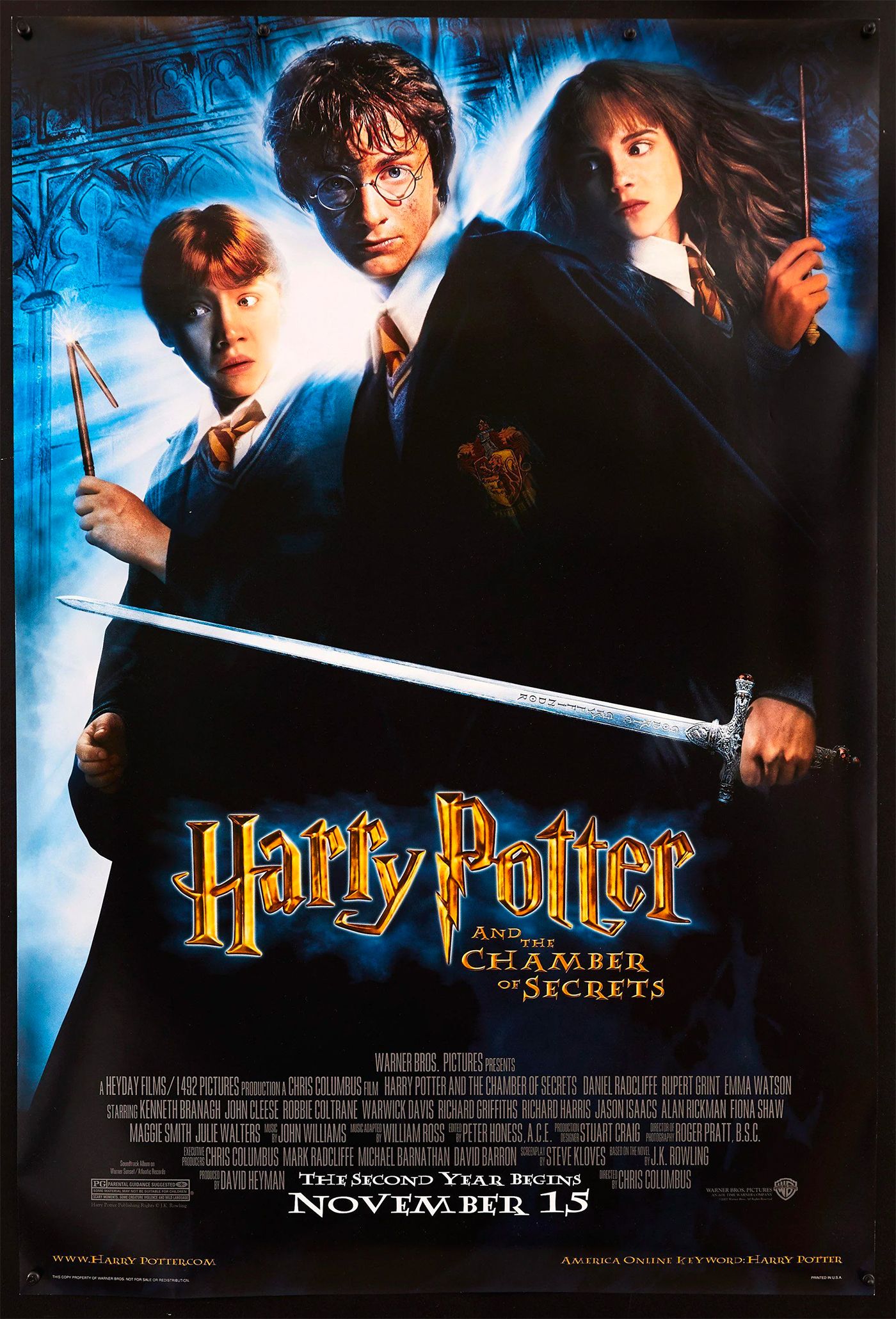
Harry Potter and the Chamber of Secrets
- Release Date
- November 13, 2002
- Director
- Chris Columbus
- Cast
- Daniel Radcliffe , Rupert Grint , Emma Watson , Richard Griffiths , Fiona Shaw , Harry Melling
- Runtime
- 161
- Main Genre
- Adventure
- Writers
- J.K. Rowling , Steve Kloves
7 Harry Potter and the Deathly Hallows – Part 1 (2010)
Directed by David Yates
It’s tough to judge a film that is self-admittedly half a story, but since it’s presented as a separate entry in the Harry Potter series, Deathly Hallows – Part 1 must be evaluated as such. Book readers had their issues with the walkabout nature of the first half of the final book, so many were bracing for a somewhat sluggish film adaptation of those initial chapters. And while Deathly Hallows – Part 1 is mightily compelling for the first hour or so (seeing these characters out and about in the muggle world is a nice change of pace), it definitely loses steam in its second half. This is due in part to the fact that Harry (Daniel Radcliffe), Ron (Rupert Grint), and Hermione (Emma Watson) are on a directionless hunt, disapparating from one gorgeous locale to the next as they bicker among themselves. This character conflict is necessary to set up the emotional payoff of Deathly Hallows – Part 2, but the act of watching a film that is almost all setup gets a bit monotonous.
And perhaps Deathly Hallows – Part 1’s biggest issue is just that there’s a lot of setup for the finale without much room for payoff. It’s a necessity, and director David Yates and screenwriter Steve Kloves handle it about as well as they can, but in one film they have to lay the foundation for all the wand business, move Ron and Hermione towards a point where they can express their romantic feelings for one another, introduce Dumbledore’s (Michael Gambon) secretive backstory, explain the Deathly Hallows, and solidify the raised stakes leading up to the Battle of Hogwarts — all without wrapping up a single one of these threads. The film works beautifully as part of a whole, but as a standalone film, it leaves plenty to be desired. That’s not to say Part 1 doesn’t have merit, however. There are even flashes of brilliance, from the strikingly haunting animated Deathly Hallows sequence to Harry and Hermione’s dance, which offers reprieve from the grave seriousness that surrounds them. The sequence further reminds the audience that these are kids – kids who have the weight of the world on their shoulders, and who, for the first time, are acting completely and utterly alone.
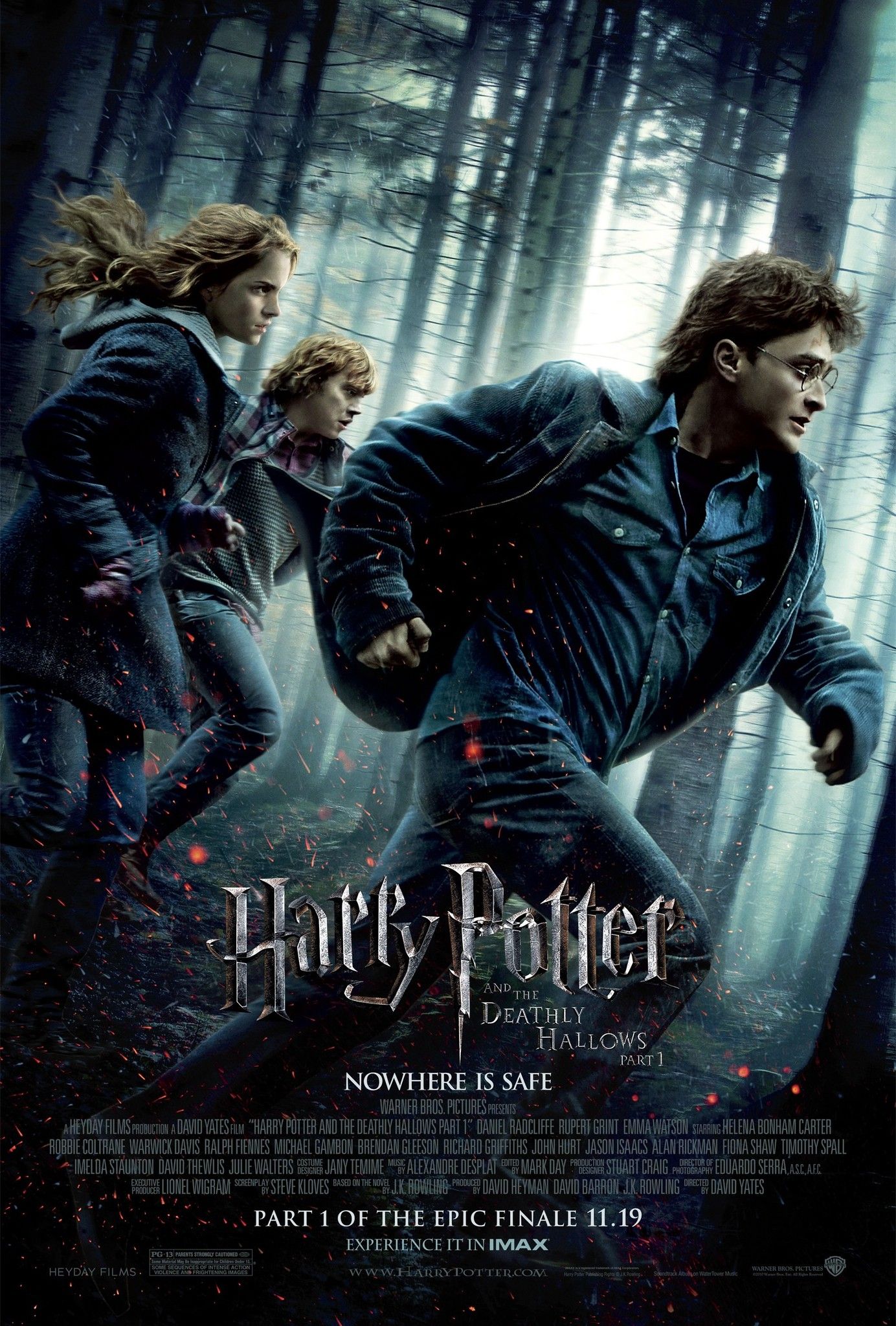
Harry Potter and the Deathly Hallows: Part 1
- Release Date
- November 19, 2010
- Director
- David Yates
- Cast
- Daniel Radcliffe , Emma Watson , Rupert Grint , Bill Nighy
- Runtime
- 156 minutes
- Main Genre
- Fantasy
- Writers
- Steve Kloves , J.K. Rowling
6 Harry Potter and the Goblet of Fire (2005)
Directed by Mike Newell
It was with Goblet of Fire that the Harry Potter novels took their big first step towards adulthood, expanding not only in size but also in scope. Director Mike Newell likewise rises to the challenge of introducing a Wizarding World much larger than Hogwarts while also giving the franchise its first major onscreen appearance of Voldemort (Ralph Fiennes). It’s in between these two heavy tasks, though, that Newell really shines, as he picks up Prisoner of Azkaban’s theme of burgeoning adolescence and moves it into the realm of romance, tackling the teen characters’ awkward feelings about the opposite sex. He handles this quite well, with plenty of drama for Harry, Ron, and Hermione on account of the looming ball and the arrival of new students from other schools. The scope of Goblet of Fire is unwieldy and the pacing of the film suffers a bit in places, but the emotional beats of the third act really land even if Voldemort’s arrival isn’t as terrifying as it could/should have been. The movie’s themes echo Harry’s series arc, as he is once again faced with an impossible challenge in which he is given no choice but to participate. That’s Harry’s life — he was bestowed this recognition and reputation as “The Chosen One” as a child, with no say in the matter, and he is constantly forced to rise to the occasion simply because he has to.
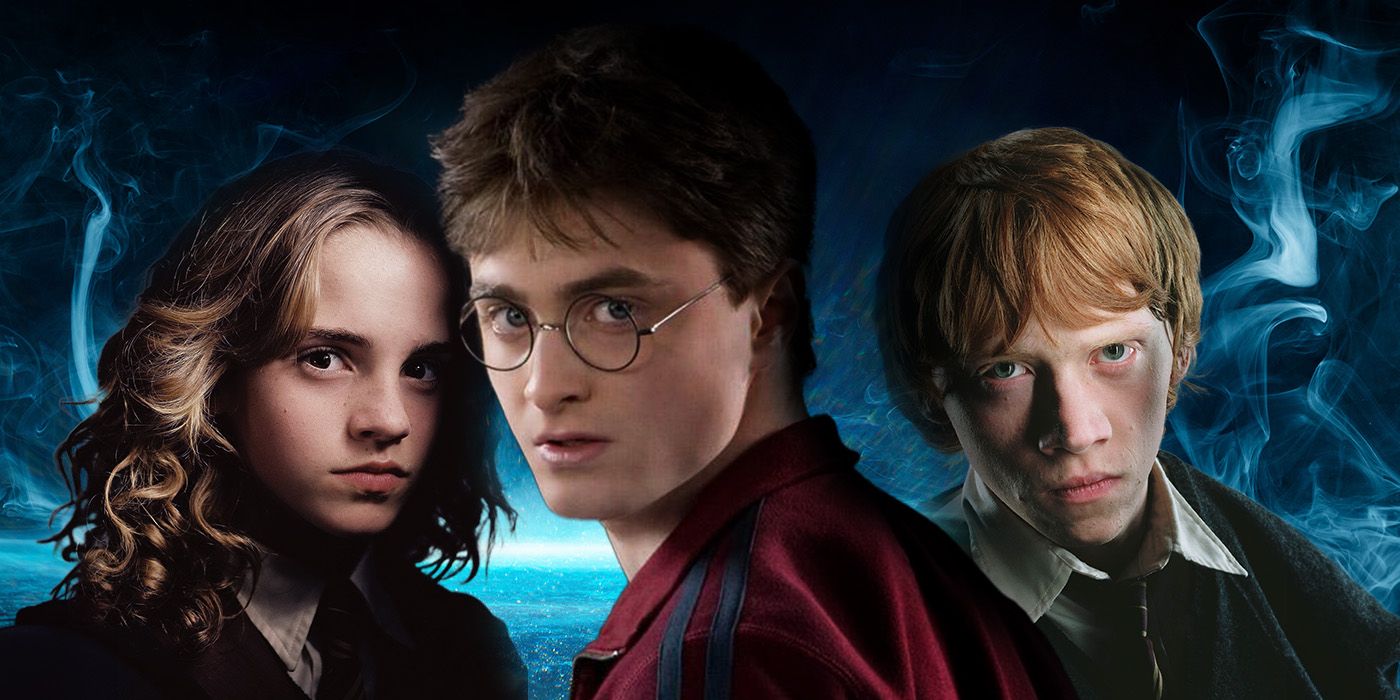
The 10 Worst Harry Potter Storylines, Ranked
We still can't get over all of those time travel plot holes.Goblet of Fire is arguably Rowling's best Potter novel in the entire series, but here's where things get conflated — just because it's the best book doesn't mean it's the best movie. I saw this film before I had read the books and strongly disliked it, but after reading the series, came to love it. Those familiar with the books are able to flesh out parts of the films that fall short, and such is the case with Goblet of Fire. It's certainly not a bad movie, and Newell brings a delightfully British energy to the proceedings, but it's not as cohesive as some of the other installments in the film franchise.
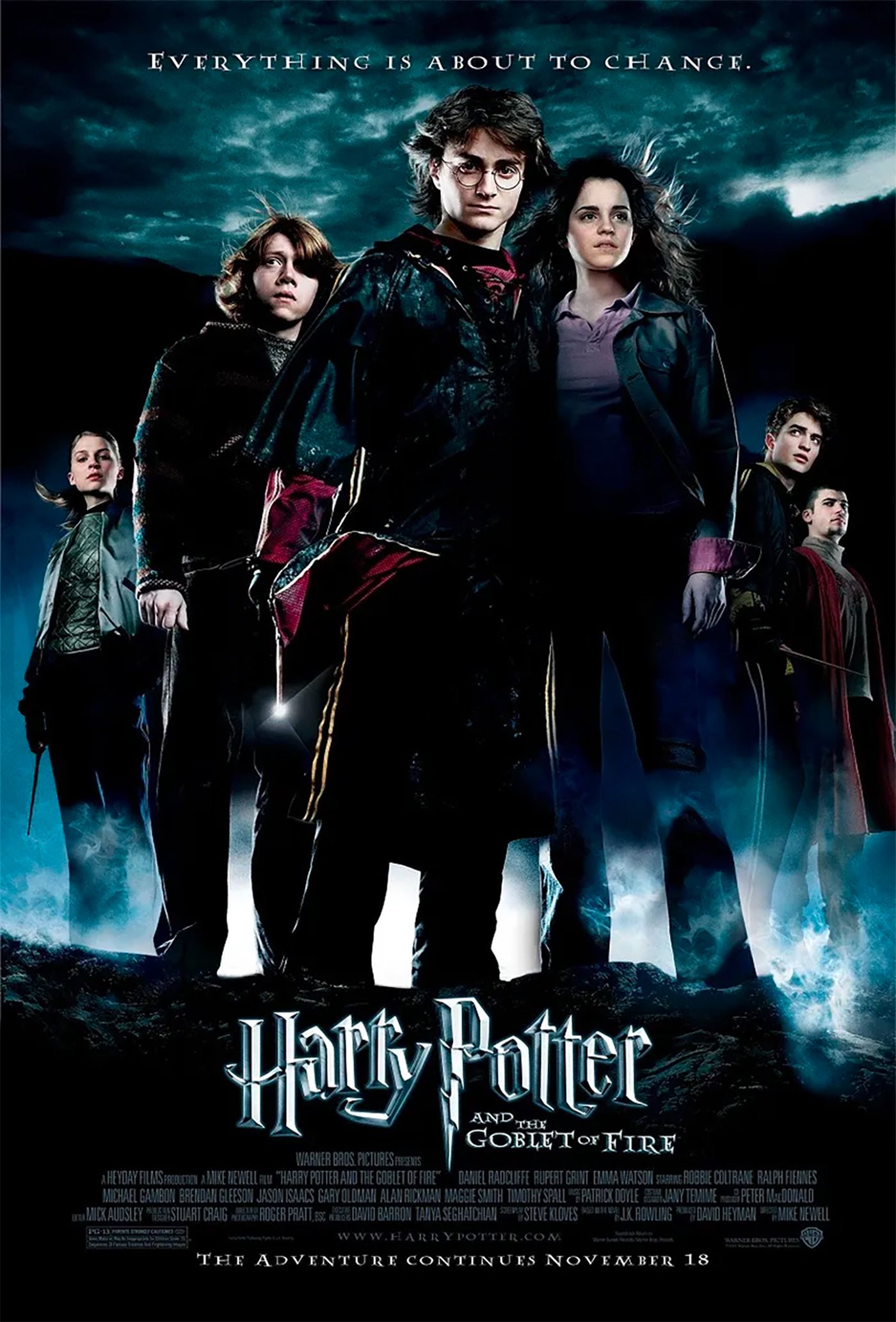
Harry Potter and the Goblet of Fire
- Release Date
- November 16, 2005
- Director
- Mike Newell
- Cast
- Eric Sykes , Timothy Spall , David Tennant , Daniel Radcliffe , Emma Watson , Rupert Grint
- Runtime
- 154 minutes
- Main Genre
- Adventure
- Writers
- Steve Kloves , J.K. Rowling
5 Harry Potter and the Sorcerer's Stone (2001)
Directed by Chris Columbus
While it may not be as flashy, refined, or impressive as the rest of the films in the franchise, Sorcerer’s Stone (or Philosopher’s Stone for the Potter purists) deserves immense credit for setting up this series so wonderfully and laying a fantastic foundation on which the other films could be built. Director Chris Columbus was not only responsible for putting together the incredible cast, but he also captured the Wizarding World on film in a manner that felt relatable and wholly transfixing. Sorcerer’s Stone is told through the eyes of an 11-year-old, so the film skews a bit younger than subsequent installments, but Columbus refuses to talk down to his audience and wisely sidesteps delving into cartoony kids’ movie land.
Even though it’s tonally the lightest film of the bunch, Sorcerer’s Stone still works wonderfully as a fantastic entry in the Harry Potter franchise. The winning combination of charm and smarts permeates throughout, and Columbus nails the founding friendship of our three heroes, culminating in a grand finale that lets each one of them shine. Who can resist adorable Ron Weasley commanding a giant chess set with gusto as he sits atop a stone knight?
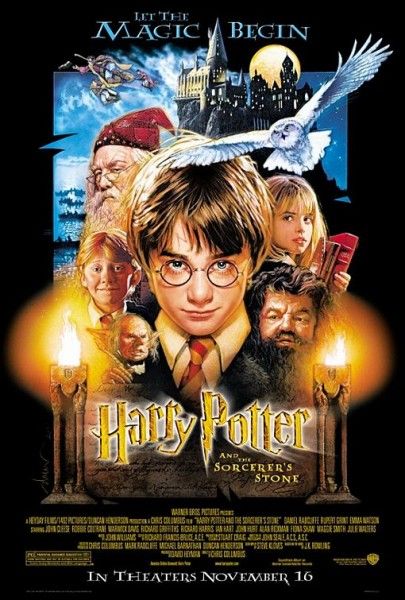
Harry Potter and the Sorcerer's Stone
- Release Date
- November 16, 2001
- Director
- Chris Columbus
- Cast
- Richard Harris , Maggie Smith , Robbie Coltrane , Saunders Triplets , Daniel Radcliffe , Fiona Shaw , Rupert Grint , Emma Watson
- Runtime
- 152 minutes
- Main Genre
- Adventure
- Writers
- J.K. Rowling , Steve Kloves
4 Harry Potter and the Order of the Phoenix (2007)
Directed by David Yates
In what would mark the final director change for the series, David Yates makes his debut with the politically-tinged Order of the Phoenix. The film also happens to be the only Harry Potter movie not written by Steve Kloves (Michael Goldenberg took on scripting duties when Kloves declined to return, though he quickly changed his mind and was back for Half-Blood Prince), but the team forged on to craft the most adult entry yet. Yates deftly navigates themes of power and corruption through the wonderfully realized character of Dolores Umbridge, played to perfection by Imelda Staunton, who just might turn in the best performance of the entire franchise. The character is disgusting, disarming, and terrifying all at once, and her impact at Hogwarts spurs Harry and Co. to start taking matters into their own hands.
It’s clear from the onset that Order of the Phoenix is going to be a rather different film, as Yates opts to open the movie in the heat of the summer, in a new location, with a layered confrontation between Harry and his cousin, Dudley (Harry Melling). The subsequent introduction of the Order once again serves to prove that Harry is a) not alone in his quest, and b) severely lacking in information about what’s really going on. The return of Sirius Black (Gary Oldman) bolsters the film’s emotional impact and deepens Harry’s arc, while the film also gives us some of the franchise’s best Harry-Snape (Alan Rickman) scenes. It all culminates in a visually arresting and surprisingly moving battle between Voldemort and Dumbledore at the Ministry of Magic, which is realized in a manner that’s both unexpected and deeply impactful. With his clear handle on character, theme, and set pieces, it’s no wonder Yates stuck around to see this franchise through to the end.
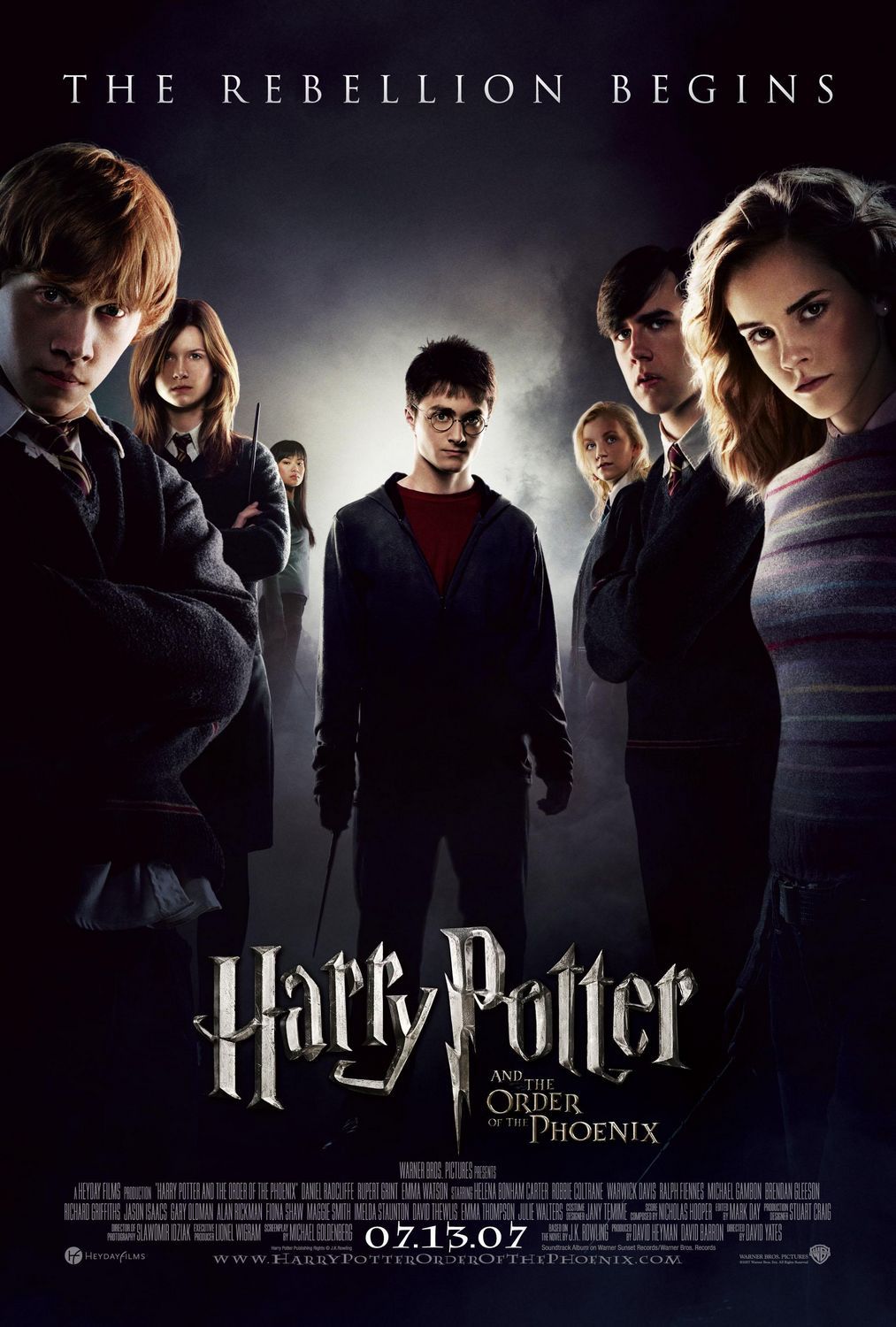
Harry Potter and the Order of the Phoenix
- Release Date
- June 28, 2007
- Director
- David Yates
- Cast
- Daniel Radcliffe , Harry Melling , Jason Boyd , Richard Macklin , Kathryn Hunter , Miles Jupp
- Runtime
- 138
- Main Genre
- Adventure
- Writers
- Michael Goldenberg , J.K. Rowling
3 Harry Potter and the Half-Blood Prince (2009)
Directed by David Yates
David Yates’ second brush with the franchise finds him navigating material that’s both some of the series’ lightest and darkest, as Half-Blood Prince is certainly the funniest film of the franchise, with Yates and the cast reveling in romantic-comedy territory throughout much of the story. Jim Broadbent brings a goofy quality to Professor Slughorn that never goes over the top, while Harry and Ron’s many brushes with romance provide loads of comedic material, culminating in the guffaw-inducing “Hermione’s got nice skin” exchange during a nighttime chat. Radcliffe, Grint, and Watson shine in these moments, and it at times feels like they’ve been waiting the whole series to knock these comedic beats out of the park.
And yet, for all its levity, Half-Blood Prince tackles some devastatingly dark material. The story beautifully builds to Dumbledore’s death (Yates’ decision to cut to a sea of wands pointing up at the sky in the immediate aftermath is a flash of brilliance) and Snape’s “betrayal” without the climax feeling like a shocking shift in tone. Yates and Kloves weave in Voldemort’s backstory and the introduction of the Horcruxes with ease. It’s this marvelous tonal balance that makes Half-Blood Prince one of the most affecting films of the series, swinging from laughter to tears at the drop of a hat.
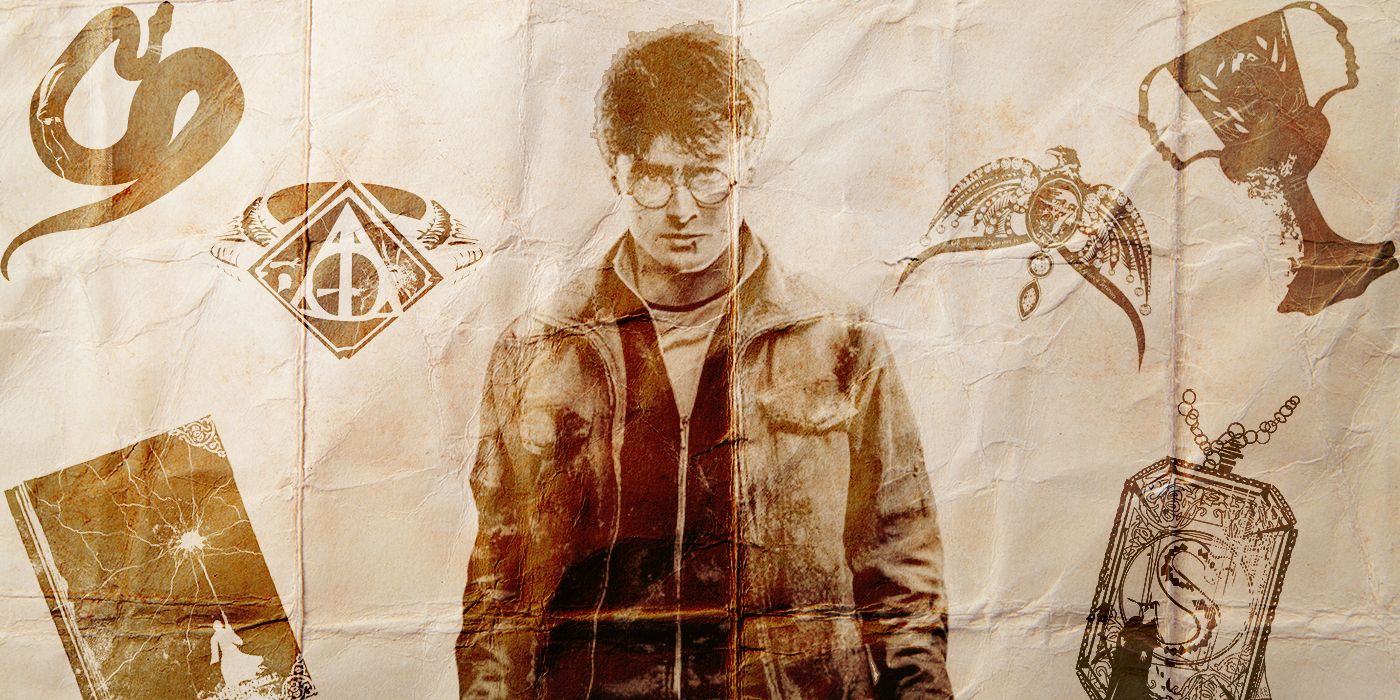
'Harry Potter': Horcruxes and You, a Guide to Splitting Your Soul Through Murder
How did this complicated piece of magic help keep Voldemort alive?And we haven’t even gotten to the film’s technical achievements yet. Yates and cinematographer Bruno Delbonell get ambitious with the film’s visuals by opting for a softer and richer palette, resulting in as lush a movie as you can get; Prisoner of Azkaban is gorgeous, but Half-Blood Prince has the best cinematography of the series hands down. And Order of the Phoenix composer Nicholas Hooper returns to craft quite possibly the best score of the franchise since John Williams’ work, also moving deftly between two wildly different tones. Yates closes the film with an appropriate farewell to Hogwarts, setting himself up wonderfully for the one-two-punch finale. But the tactful navigation of humor, thrills, and emotional devastation solidify Half-Blood Prince as one of the best films in the series, and a tough act to follow.
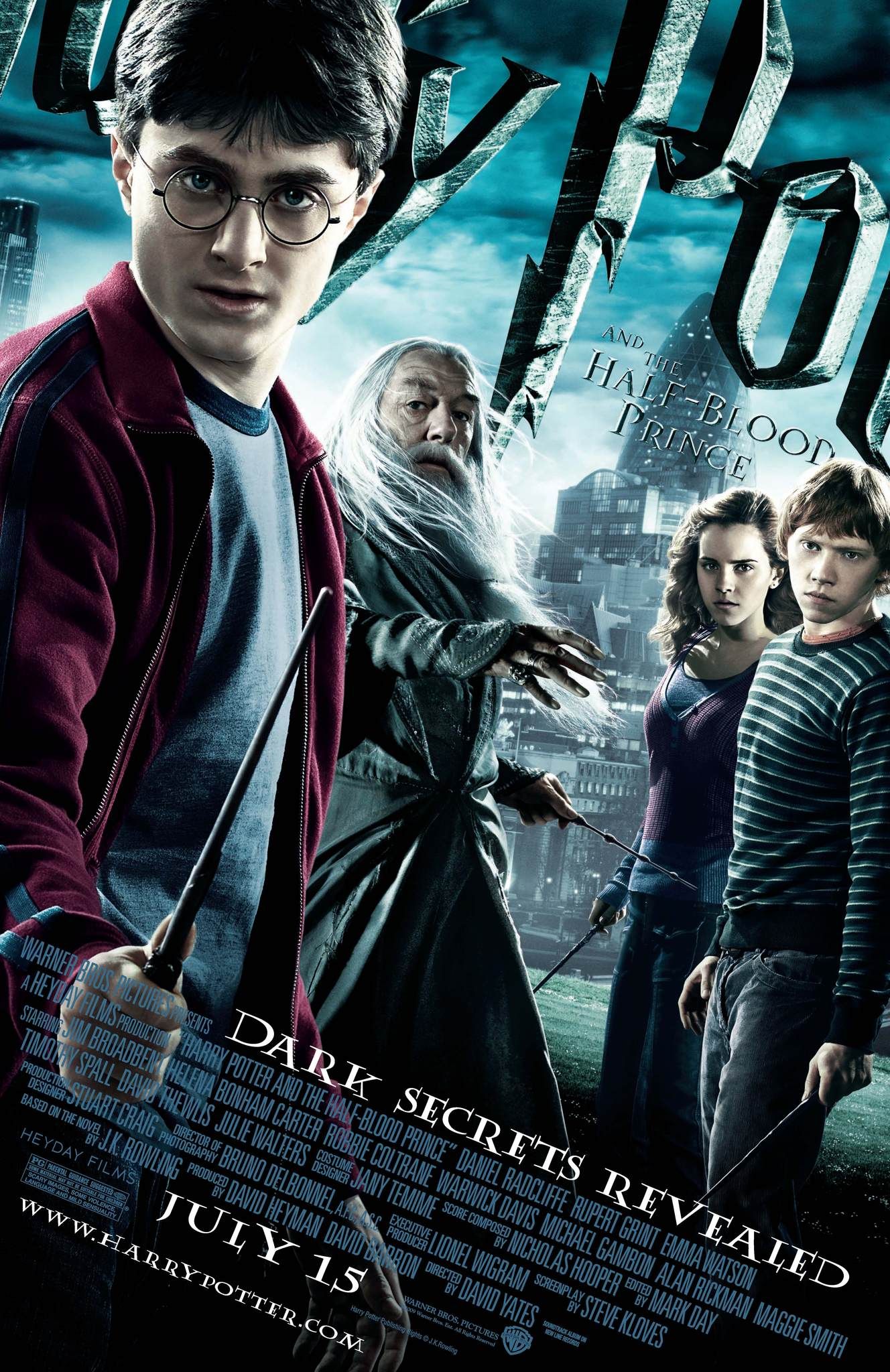
Harry Potter and the Half Blood Prince
- Release Date
- July 15, 2009
- Director
- David Yates
- Cast
- Daniel Radcliffe , Emma Watson , Rupert Grint , Michael Gambon , Dave Legeno , Elarica Johnson
- Runtime
- 153 minutes
- Main Genre
- Adventure
- Writers
- Steve Kloves , J.K. Rowling
2 Harry Potter and the Deathly Hallows — Part 2 (2011)
Directed by David Yates
Harry Potter and the Deathly Hallows – Part 1 was nearly all setup, but Deathly Hallows – Part 2 hits the ground running from the first frame and never lets up. This is a movie that offers payoff in every sense: emotional payoff, action payoff, and relationship payoff. David Yates had the unenviable task of wrapping up the most popular film franchise since Star Wars in a way that would satisfy even the most rabid of fans, and he absolutely sticks the landing with the most challenging film of the series. Deathly Hallows – Part 2 is almost operatic in nature, as it builds to a grand finale at the place where it all started: Hogwarts. Not only are the set pieces exhilarating, but they’re anchored by characters we’ve grown to love over the course of seven films, and Yates plays into that attachment to emotionally shattering results. He handles the deaths of many familiar faces in unexpected ways — the obvious manipulative play would’ve been to show Fred’s (James Phelps) death with swelling music, but Yates and Kloves instead reveal Fred’s fate after the fact, surrounded by his family, to much more gut-punching results.
Perhaps the film’s most difficult task was to establish Snape as a (or arguably the) hero in a single sequence. Yates, Kloves, and Alan Rickman rise to the challenge in one of the franchise’s most emotional moments that not only leaves the audience in tears for brave, dear Snape, but also solidifies Harry’s purpose: He must die. There are so many ways Deathly Hallows – Part 2 could’ve gone wrong, but given how wonderfully the Harry Potter filmmaking team had fared before, I guess it shouldn’t really be a surprise that they brought this thing home with the same level of quality we’d seen previously. Harry Potter closes in glorious fashion with a film that not only serves as a superb conclusion but also as a wholly satisfying entry unto itself.
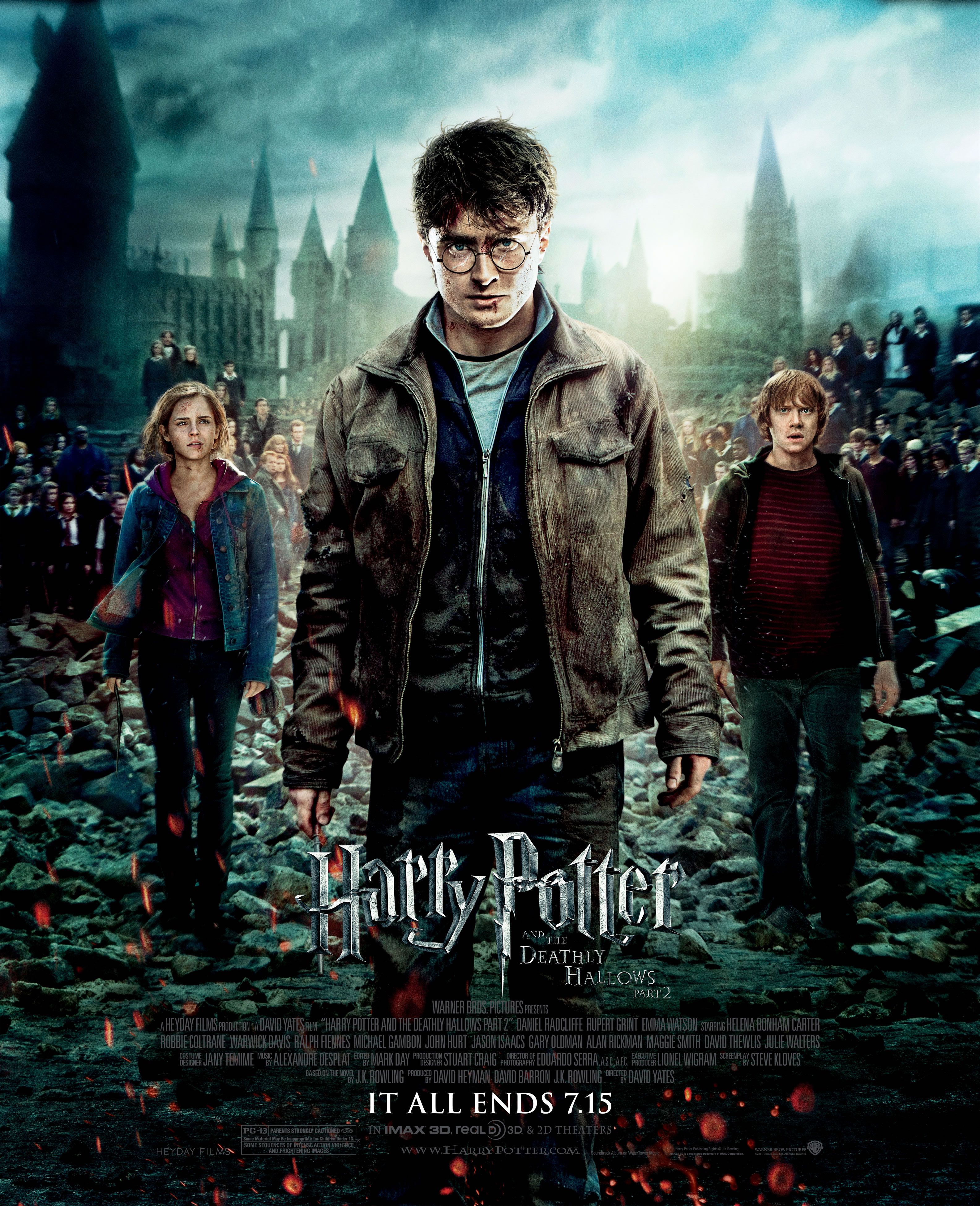
Harry Potter and the Deathly Hallows - Part 2
- Release Date
- July 7, 2011
- Director
- David Yates
- Cast
- Ralph Fiennes , Michael Gambon , Alan Rickman , Daniel Radcliffe , Rupert Grint , Emma Watson
- Runtime
- 130 minutes
- Main Genre
- Adventure
- Writers
- Steve Kloves , J.K. Rowling
1 Harry Potter and the Prisoner of Azkaban (2004)
Directed by Alfonso Cuarón
The importance of Prisoner of Azkaban to the Harry Potter film series cannot be overstated. This is the movie that established the creative direction and formula for the films that followed, as the series faced a crucial issue post-Chamber of Secrets. How does one adapt increasingly lengthy books into satisfying feature films? The solution: everything that is told from Harry’s point of view or that directly affects his character goes in, everything else is fair game for being dropped. But it wasn’t only the POV rule that Azkaban established going forward; it was also the freedom to get creative — really creative.
Director Alfonso Cuarón significantly altered the look and feel of Harry Potter without completely removing what Chris Columbus had built in the prior two films, while at the same time expanding the depth of the characters and, well, getting weird. From the Knight Bus sequence to the Hogwarts choir (plus frogs) to the Dementors, Prisoner of Azkaban is absolutely tactile — you can feel this world. And it’s a testament to Cuarón’s vision and cinematographer Michael Seresin’s beautiful photography that nearly every frame of film in this thing looks like a painting. The irises, the Whomping Willow marking the changes of the season, the camera moving through the clock — this movie is filled to the brim with unforgettable imagery.
Azkaban is also the film in which Radcliffe, Grint, and Watson really come into their own as actors and begin to forge a path that makes these characters their own. Radcliffe, in particular, shines opposite Gary Oldman and David Thewlis, as the character’s unending search for a father figure continues. Cuarón and Co. also had the unenviable task of recasting Dumbledore following the great Richard Harris’ passing, but Michael Gambon picks up the baton beautifully — his performance neither tries to emulate Harris’ nor does it dishonor the actor’s previous characterization.
And while the time turner business is executed to near-perfection (Azkaban really is one of the most streamlined stories in Rowling’s book series), simply telling the story is not enough for Cuarón — everything is in service to the characters, which in turn services the film’s thematic throughline of adolescence. As they enter puberty, these young characters begin to forge a path of independence, and Cuarón captures this wonderfully in manners both subtle (each actor wears his or her uniform slightly differently in this film) and obvious (Harry “running away from home” at the beginning). The merits of Prisoner of Azkaban are almost unending, and while the Harry Potter franchise would lead to other outstanding entries in subsequent years, Cuarón’s film still marks the creative highpoint in one of the best and most satisfying film franchises of all time. At the risk of sounding cliché, Harry Potter and the Prisoner of Azkaban is pure magic.
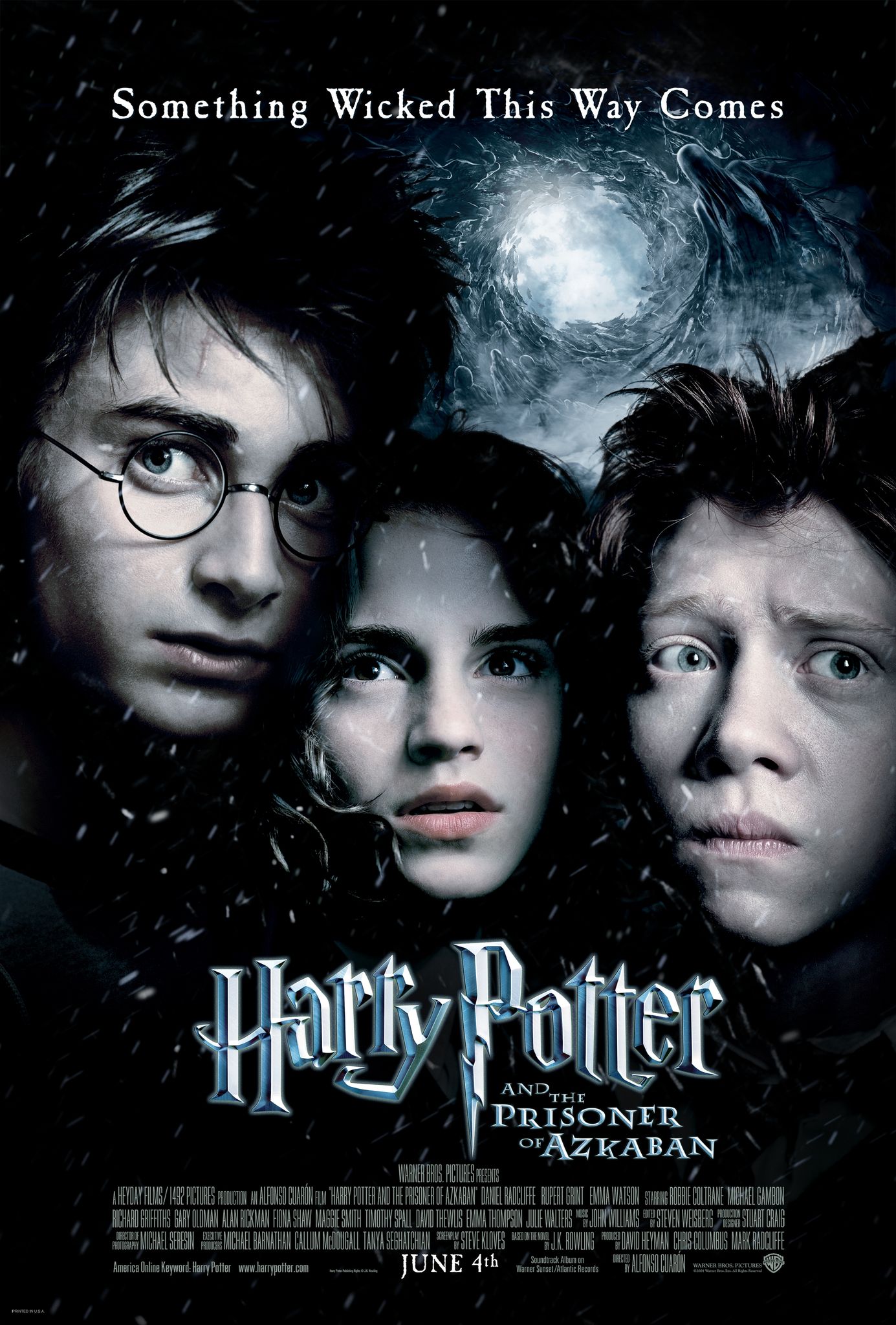
Harry Potter and the Prisoner of Azkaban
- Release Date
- May 31, 2004
- Director
- Alfonso Cuarón
- Cast
- Daniel Radcliffe , Richard Griffiths , Pam Ferris , Fiona Shaw , Harry Melling , Adrian Rawlins
- Runtime
- 141
- Main Genre
- Adventure
- Writers
- J.K. Rowling , Steve Kloves


